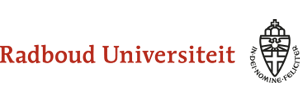American English Phonetics
Another American English Faculty Project
8.4 Manner of articulation
A first subdivision distinguishes obstruents from sonorants. Obstruents are subdivided into stops, fricatives, and affricates. Sonorants fall into two classes: nasals and approximants. These manners of articulation are defined below.
Obstruents are subdivided as follows:
| Stops (Du plosieven) | Are formed by creating a complete closure at some point in the speech tract, behind which the air from the lings is compressed until the closure is abruptly released so that the air explodes outward. Since the soft palate is raised, the air cannot escape through the nasal cavity. Pronounce AN paal, taal, kaal and feel how the closures are made in three different places. Pronounce apen, Abe and note that the medial stops have the same place of articulation, but differ in the state of the glottis. Other examples of stops are [g] in GA again or [k] in GA skin. |
| Fricatives (Du fricatieven) | Are formed by narrowing the speech tract to such a degree that friction is produced. Pronounce AN vis, oog, chef and feel how the narrowing is made for the consonants. Pronounce AN Ijssel, ijzel and note that the medial consonants have the same narrowing, but differ in the state of the glottis. Further examples are voiceless [θ] in GA thin, nothing, and voiced [ʒ] in GA vision, decision. |
| Affricates (Du affrikaten) | Begin like stops and end like fricatives. Examples are [ts] in german Zeit and [d͡ʒ] in GA Roger. |
Sonorants: Unlike obstruents, but like vowels, sonorants are pronounced with a relatively free escape of the airstream through the oral or nasal cavity: they also sound a lot like vowels. They are normally voiced, and so do not come in pairs.
| Nasals (Du nasalen) | Derive their name from the nasal escape of the airstream by which they are characterized; the soft palate is lowered and the oral cavity is blocked completely at some point, so that the air escapes through the nose only. Pronounce mening and notice how each nasal has a different place of articulation. In addition to [m], [n] and [ŋ] (which occur in both GA and NA) also prepalatal [ɲ] occurs in AN, as in franje. |
| Approximants (Du approximanten) | Derive their name from the approximation of the articulators which give rise to a light or near-contact, the airstream being so weak that no friction is produced. Pronounce AN ajuin, Ajax and not that there is no friction for [j]. The same applies to the medial consonant in GA hurry, carry. One of the approximants, [l] as in AN olie, is a lateral (approximant): the airstream is partly blocked by the tongue but allowed to escape freely on one or both sides, i.e. laterally. |
There are two further manners of articulation that are relatively frequent. These are:
| Roll (Du ratelklank) | Formed when a flexible organ such as the uvula or (the tip of) the tongue vibrates against a firmer surface. An example would be the rolled tongue-r which may be heard in Dutch Rennen! |
| Flap | When only a single tap is made as opposed to a series, the manner of articulation is called ‘tap,’ also known as ‘flap,’ An alveolar flap is sometimes heard intervocalically in Dutch serie. In Spanish the word pero (but) has a flap, while perro (dog) has a roll. In GA atom – Adam both medial consonants are normally realized as flaps. |
